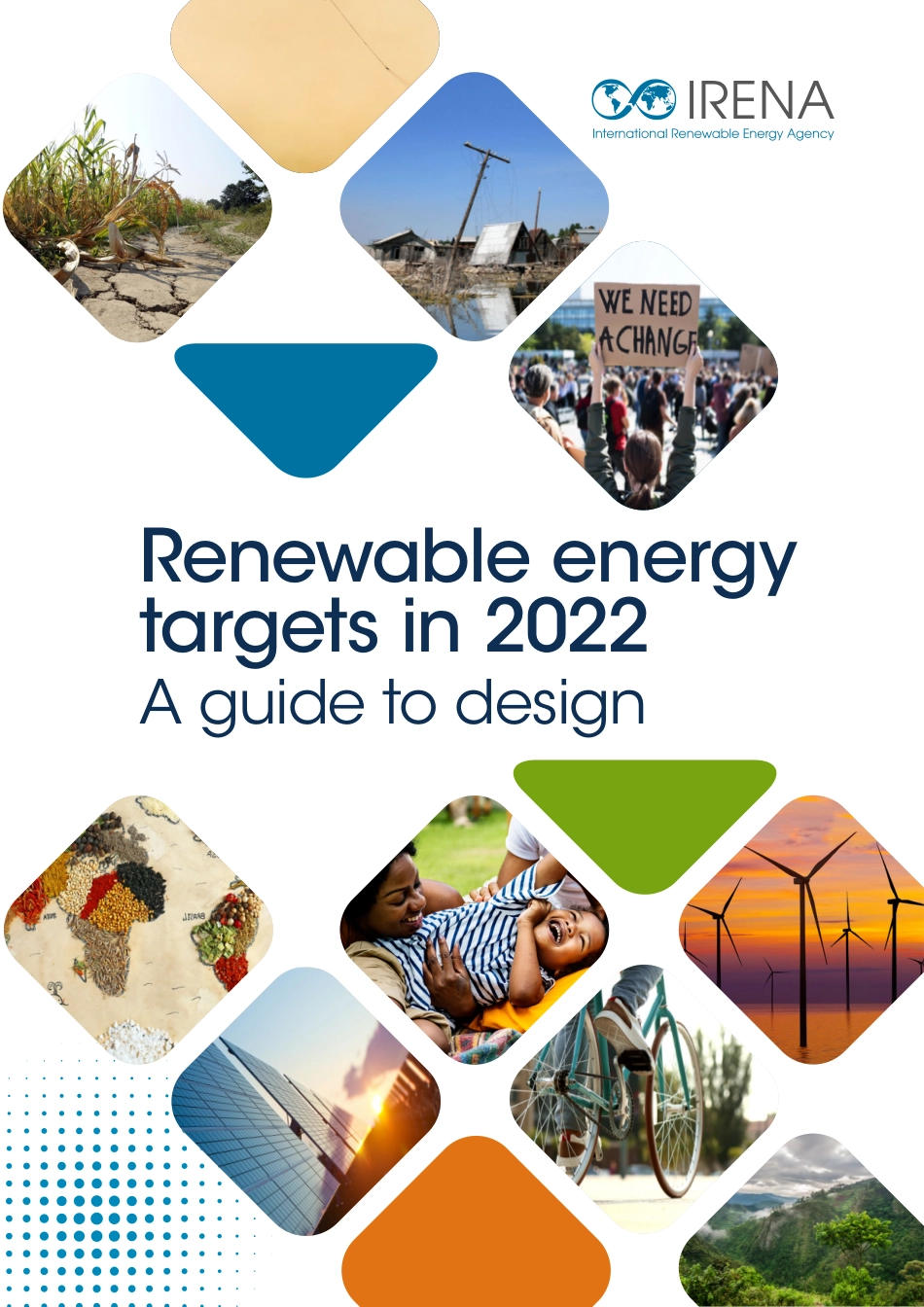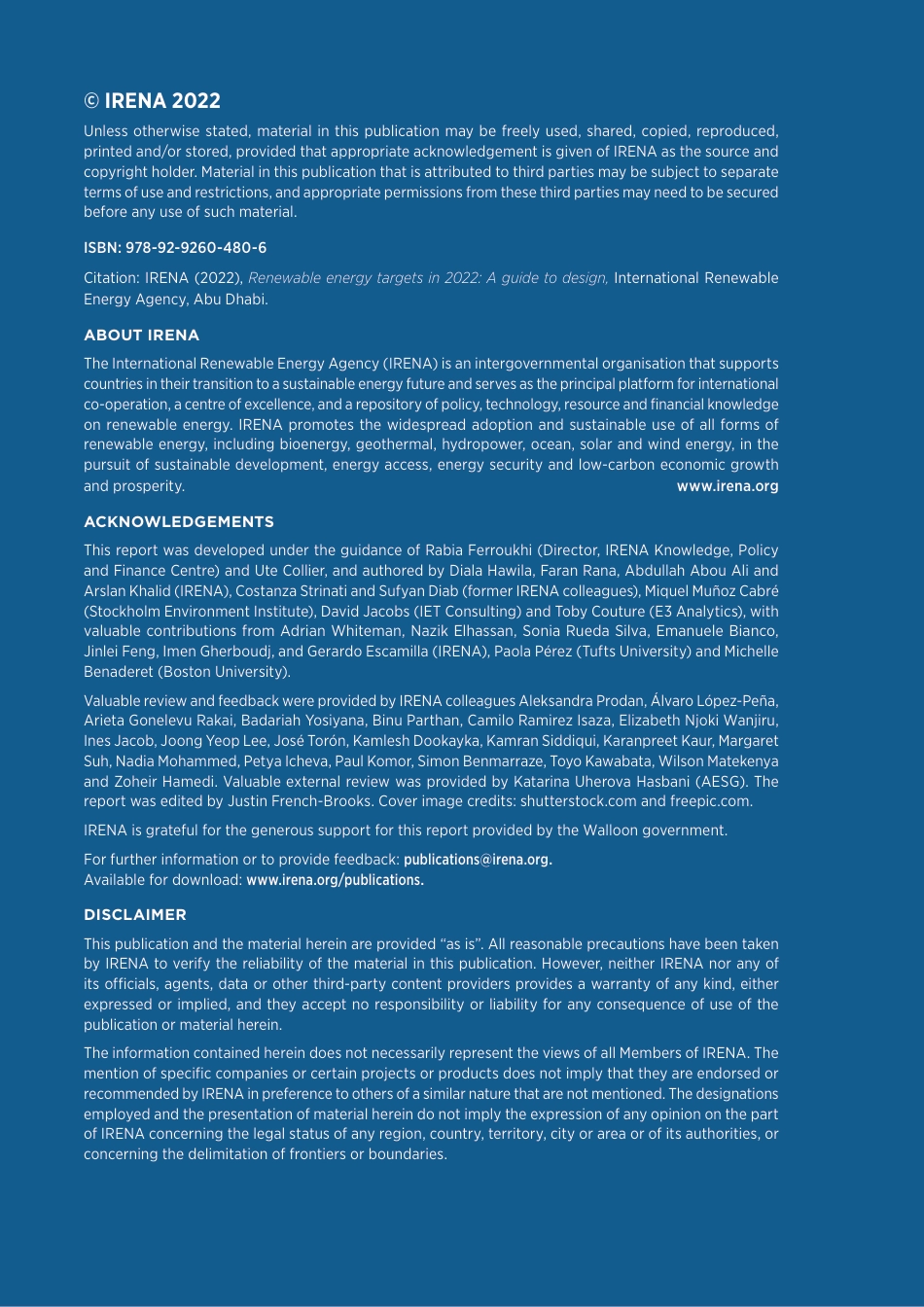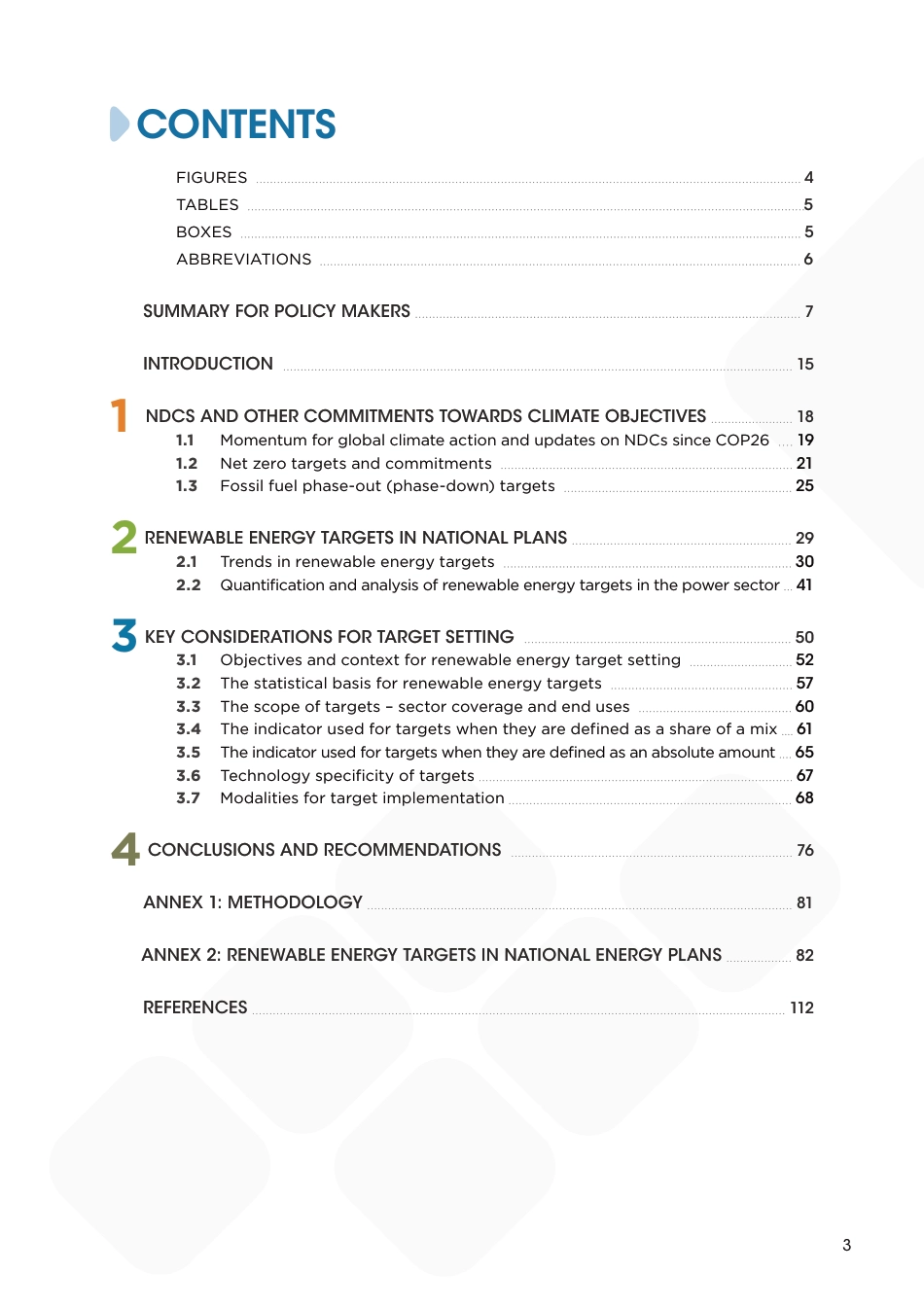Renewable energy targets in 2022A guide to design© IRENA 2022Unless otherwise stated, material in this publication may be freely used, shared, copied, reproduced, printed and/or stored, provided that appropriate acknowledgement is given of IRENA as the source and copyright holder. Material in this publication that is attributed to third parties may be subject to separate terms of use and restrictions, and appropriate permissions from these third parties may need to be secured before any use of such material.ISBN: 978-92-9260-480-6Citation: IRENA (2022), Renewable energy targets in 2022: A guide to design, International Renewable Energy Agency, Abu Dhabi. ABOUT IRENAThe International Renewable Energy Agency (IRENA) is an intergovernmental organisation that supports countries in their transition to a sustainable energy future and serves as the principal platform for international co-operation, a centre of excellence, and a repository of policy, technology, resource and financial knowledge on renewable energy. IRENA promotes the widespread adoption and sustainable use of all forms of renewable energy, including bioenergy, geothermal, hydropower, ocean, solar and wind energy, in the pursuit of sustainable development, energy access, energy security and low-carbon economic growth and prosperity. www.irena.orgACKNOWLEDGEMENTSThis report was developed under the guidance of Rabia Ferroukhi (Director, IRENA Knowledge, Policy and Finance Centre) and Ute Collier, and authored by Diala Hawila, Faran Rana, Abdullah Abou Ali and Arslan Khalid (IRENA), Costanza Strinati and Sufyan Diab (former IRENA colleagues), Miquel Muñoz Cabré (Stockholm Environment Institute), David Jacobs (IET Consulting) and Toby Couture (E3 Analytics), with valuab...



